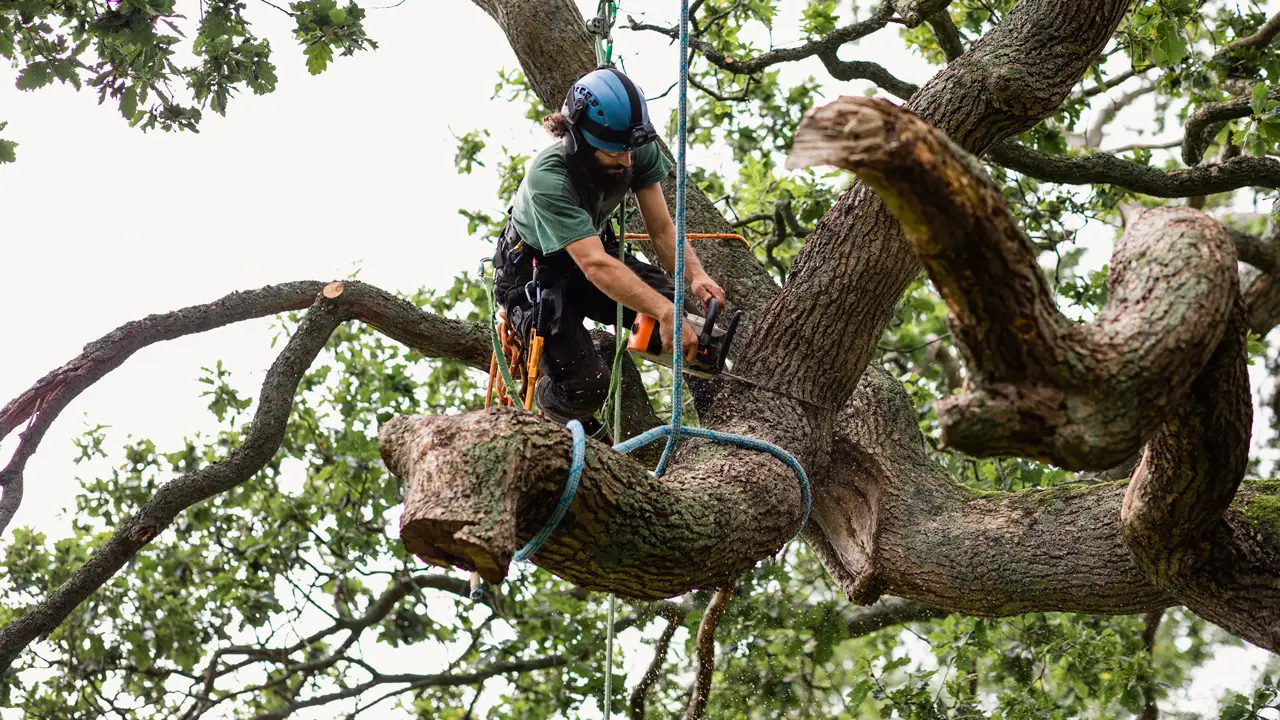Trees are majestic additions to any property. They provide shade, improve air quality, and create a beautiful natural aesthetic. But like all living things, trees have a lifespan, and sometimes, a beloved tree can become a hazard. Knowing when to remove a tree is crucial to ensure the safety of your home, family, and property.
This blog post will equip you with the knowledge to identify signs that your tree might be a liability and guide you towards making an informed decision about its future.
When Your Tree Becomes a Threat
Healthy trees add value to your property, but a neglected or diseased tree can pose a significant risk. Here are some key indicators that you might need tree removal in Hamilton:
Dead or Dying Branches: Large, hanging branches are a major safety concern. Dead branches are brittle and more susceptible to breaking off during storms or strong winds, potentially causing damage to your property or injuring someone.
Leaning Trees: A significant lean towards your house, power lines, or other structures signifies a potential hazard. Leaning trees can topple over entirely due to wind, weak roots, or disease, causing significant damage.
Trunk Damage: Visible cracks, splits, or large cavities in the trunk compromise the tree’s structural integrity. Significant trunk damage weakens the tree and increases the risk of collapse.
Missing Bark: Large patches of missing bark expose the tree’s inner wood to disease and insects. This not only weakens the tree but also attracts pests that can spread to other healthy trees in your yard.
Fungal Growth: Mushrooms or other fungal growths on the trunk or branches are a sign of internal decay. Fungal diseases weaken the tree’s structure and can ultimately lead to its demise.
Signs of Pests: Excessive insect activity, such as visible holes, chewed leaves, or large amounts of sap dripping from the trunk, suggests your tree might be infested with pests. Depending on the type of pest, this can weaken the tree and spread to other vegetation.
Unhealthy Foliage: Noticeably sparse leaves, discolouration, or stunted growth indicate a struggling tree. This could be a sign of disease, nutrient deficiency, or other issues that could make the tree more susceptible to falling or breaking.
Root Issues: Roots that are pushing up sidewalks, driveways, or the foundation of your home can cause significant structural damage. Additionally, exposed roots are tripping hazards and can create an uneven walking surface.
Location, Location, Location: Sometimes, perfectly healthy trees can become problematic due to their location. For instance, a fast-growing tree planted too close to your house could eventually damage the foundation or roof with its expanding roots and branches. Similarly, trees planted too close to power lines pose a risk of electrical hazards during storms or strong winds.
Considering Alternatives to Removal
While tree removal in Geelong might seem like the only solution in some cases, it’s important to explore all options first. Here are some alternative approaches:
Pruning: Regular pruning can significantly improve a tree’s health and appearance. This involves removing dead, diseased, or overcrowded branches to improve stability and reduce the risk of falling limbs.
Cabling and Bracing: This technique utilises cables and braces to support the weight of heavy limbs or correct a slight lean in the tree. This can be a viable option for healthy trees with structural weaknesses that can be addressed.
Tree Disease Treatment: If your tree is suffering from a disease, a certified arborist may recommend treatment options to potentially save it. Early detection and treatment are crucial for success.
Consulting a Certified Arborist:
A certified arborist is a tree care professional with the knowledge and expertise to assess the health and safety of your tree. They can recommend the best course of action, whether it’s removal, pruning, or treatment. They can also advise on proper planting techniques for new trees to avoid future issues.
Making the Difficult Decision
Ultimately, the decision to remove a tree should be made carefully and with the guidance of an arborist. Here are some additional considerations:
The Age and Species of the Tree: Mature trees with a history of problems or known to have short lifespans might be better off removed before they become a major hazard.
Local Regulations: Some municipalities have regulations regarding tree removal in Hamilton. Check with your local authorities to understand any permits or restrictions that might apply.
Environmental Impact: Removing a mature tree can affect the local ecosystem. Consider planting a new tree elsewhere in your yard to mitigate the environmental impact.
Emotional Attachment: Trees can hold sentimental value. Take some time to weigh the emotional impact of removal along with the potential risks the tree poses
Taking Action: The Removal Process
If you’ve decided that tree removal in Hamilton is the best course of action, here’s what to expect:
Hiring a professional tree removal service: Look for a licensed and insured company with experienced arborists and a proven safety record. Always get quotes from multiple companies and ask for references.
Discussing the project: A qualified tree removal service will assess the situation and develop a plan that considers the size and location of the tree, safety concerns, and access limitations. They will also discuss the disposal of the tree and stump removal options with you.
The Removal Process: Tree removal can be a complex operation, especially for large or hazardous trees. Professional tree removal services have the necessary equipment and expertise to ensure the safe and efficient removal of the tree, minimising damage to your property and surrounding landscaping.
Tree Removal Aftermath: Depending on your needs, the tree removal service can handle grinding the stump, hauling away debris, and cleaning up the work area.
Conclusion
Trees are a valuable asset, but their health and safety must be a priority. By recognising the signs that a tree might become a liability, you can make informed decisions about its future. Remember, consulting a certified arborist is crucial for an accurate assessment and exploring all possible solutions before resorting to removal. This proactive approach ensures the safety of your property and allows you to enjoy the beauty and benefits of healthy trees for years to come.





